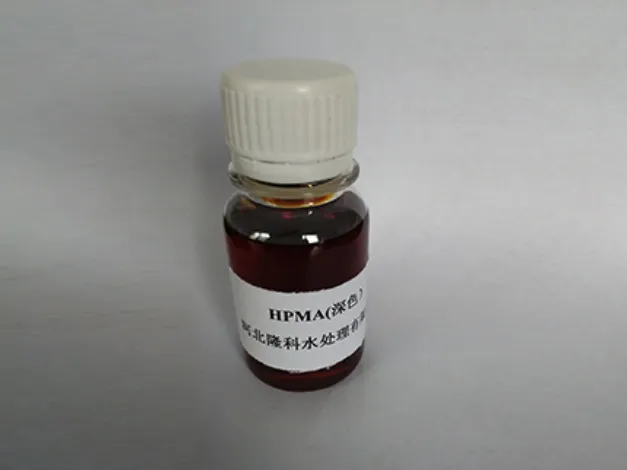anionic polyacrylamide flocculant
Anionic Polyacrylamide Flocculant Properties, Applications, and Benefits
Anionic polyacrylamide (APAM) is a synthetic water-soluble polymer widely used as a flocculant in various industries. Its unique chemical structure provides it with the ability to interact with suspended particles in water, promoting their aggregation and sedimentation. This property has made APAM a preferred choice in water treatment, mining, paper production, and more. This article delves into the characteristics, applications, and benefits of using anionic polyacrylamide flocculants.
Chemical Properties and Structure
Anionic polyacrylamide is derived from acrylamide, a compound that can be produced through the polymerization of acrylamide monomers in an aqueous solution. The anionic character of APAM is due to the presence of carboxylate groups (-COO-) along its polymer chains. These negatively charged groups enable the polymer to interact effectively with positively charged particles, such as sediments, organic materials, and metals, facilitating the flocculation process.
APAM's molecular weight can vary significantly, influencing its performance in different applications. High molecular weight APAM is particularly effective for thickening and flocculating, while lower molecular weights may be preferable for specific applications requiring rapid dispersion or lower viscosity.
Applications of Anionic Polyacrylamide Flocculants
1. Water and Wastewater Treatment APAM is predominantly used in the treatment of municipal and industrial wastewater. It aids in the removal of suspended solids, colloidal particles, and organic matter by promoting their aggregation, which accelerates sedimentation and enhances clarity in treated water.
2. Mining Industry In the mining sector, anionic polyacrylamide is utilized for settling tailings, a byproduct of mineral processing. By flocculating fine particle suspensions, it helps in recovering water for reuse and minimizing environmental impact.
3. Paper Industry APAM plays a crucial role in the paper manufacturing process. It is used to enhance retention of fillers and fibers during the paper formation phase, improving overall product quality while reducing the amount of chemicals needed.
4. Agriculture In agricultural practices, APAM is used to improve water retention in soil and reduce erosion. Its ability to retain moisture helps enhance crop yield, particularly in arid regions, making it valuable for sustainable agricultural practices.
anionic polyacrylamide flocculant

Benefits of Anionic Polyacrylamide Flocculants
The use of anionic polyacrylamide offers several significant advantages
1. Efficiency in Particle Removal APAM's ability to rapidly flocculate particles leads to greater efficiency in separating solids from liquids. This results in shorter processing times and lower operating costs in water treatment and other applications.
2. Environmentally Friendly Anionic polyacrylamide is generally considered non-toxic and environmentally safe. Its use in various industries helps reduce the reliance on harsh chemicals traditionally used for flocculation.
3. Versatility The adaptability of APAM to different molecular weights and formulations allows customization based on specific operational requirements, making it suitable for a wide range of applications.
4. Cost-Effectiveness The enhanced efficiency in flocculation and sedimentation processes reduces the volume of chemicals and energy needed in treatment processes, leading to overall cost savings.
5. Improved Product Quality In industries such as paper and agriculture, the use of APAM can lead to improved product quality, whether through enhanced clarity in water supplies or better soil conditions.
Conclusion
Anionic polyacrylamide flocculants are indispensable in modern industries requiring effective sedimentation and flocculation processes. Their unique properties, combined with the array of benefits they provide, position them as vital materials in enhancing operational efficiency and promoting sustainability in water management, mining, agriculture, and other critical applications. As industries continue to seek safer and more efficient alternatives, the role of APAM is likely to grow even more prominent in the future.
-
LK-319 Special Scale And Corrosion Inhibitor For Steel Plants: Advanced Solutions for Industrial Water SystemsNewsAug.22,2025
-
Flocculant Water Treatment: Essential Chemical Solutions for Purification ProcessesNewsAug.22,2025
-
Isothiazolinones: Versatile Microbial Control Agents for Industrial and Consumer ApplicationsNewsAug.22,2025
-
Scale Inhibitor: Key Solutions for Water System Scale PreventionNewsAug.22,2025
-
Organophosphonates: Versatile Scale Inhibitors for Industrial Water SystemsNewsAug.22,2025
-
Scale and Corrosion Inhibitor: Essential Chemical Solutions for Water System MaintenanceNewsAug.22,2025





